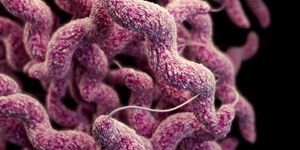Turning bullfrog skin into human bones - as easy as....?
In an effort to support the growth of the circular economy, researchers from Nanyang Technological University, Singapore (NTU Singapore) have developed a method that converts by-products from the aquaculture industry into a new biomaterial. The team says that by-products such as fish fins and scales, and bullfrog skins, which produce approximately 20 million tons of waste annually in Singapore, could be used to aid in bone repair and growth.
"We took the 'waste-to-resource' approach in our study and turned discards into a high-value material with biomedical applications, closing the waste loop in the process,” comments lead researcher and Assistant Professor Dalton Tay of the NTU School of Materials Science and Engineering (MSE). “Our lab studies showed that the biomaterial we have engineered could be a promising option that helps with bone repair. The potential for this biomaterial is very broad, ranging from repairing bone defects due to injury or aging to dental applications for aesthetics. Our research builds on NTU's body of work in the area of sustainability and is in line with Singapore's circular economy approach towards a zero-waste nation."
While standard practices for many bone growth procedures involve using a patient's own tissues (which thus requires additional surgery for bone extraction), this new biomaterial made from bullfrog skin is a natural tissue regenerator. The biomaterial works by acting as a scaffold for bone-forming cells to adhere to and multiply; for all those gardeners out there, it’s essentially a trellis for your baby peas to latch onto and sprout into maturity.
Even those unaffiliated with the study are excited about the new material’s potential. Clinical Associate Professor Goh Bee Tin, who is the Director for Research at the National Dental Centre Singapore, comments: “We see many potential dental applications ranging from the regeneration of gum tissues in periodontal disease to bone for the placement of dental implants, to jawbone following tumor surgery. Obviating the need for additional bone harvesting surgery also translates to time and cost savings, and less pain for patients."
The NTU Singapore team showed that not only does the biomaterial act as a scaffolding but that it has a very low risk of triggering an inflammatory response, which is important given the applications it is intended to have. The team’s findings have been published in the journal Materials Science and Engineering C.
The researchers report that their method is already commercially viable and they plan to continue collaborating with clinical and industrial partners on animal studies to find out how tissues in the body would respond to this biomaterial in the long term.
Sources: Materials Science & Engineering C, Eureka Alert








